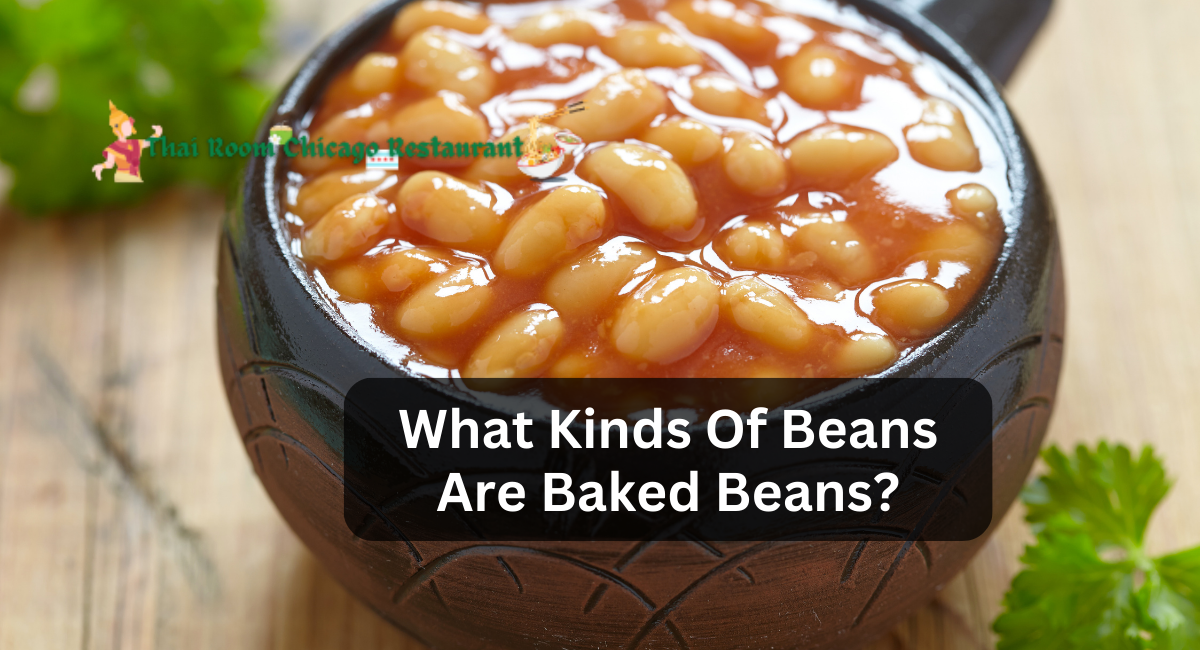Baked beans are a popular comfort food eaten by people all over the world. These hearty legumes have a distinct flavor that is both soothing and gratifying, thanks to their coating in a rich, savory sauce.
But have you ever wondered what kind of beans are used to make this traditional dish? In this article, we’ll solve the enigma of baked beans and look at the different types of beans that may be found in this delectable dish.
What Kinds Of Beans Are Baked Beans?
Navy beans, also known as haricot beans, are a type of bean that is widely used in baked beans. These little oval-shaped white beans are a popular choice for baked beans since they have a mild flavor and a creamy texture when cooked.
Navy beans are soaked, then cooked until tender in a sweet and savory sauce made with molasses, brown sugar, tomato sauce or ketchup, mustard, onions, and, for extra flavor, bacon or ham.
While navy beans are the most popular type of bean used to make classic baked beans, other types of beans can also be used to make baked bean variations.
For example, you can find recipes for baked beans with diverse flavors and textures, including kidney beans, pinto beans, or black beans.
However, when most people say “baked beans,” they usually mean the classic dish made with navy beans.
Different Types of Beans
Great Northern Beans
A Close Cousin
The size and consistency of Great Northern beans are comparable to that of navy beans. They have a flavor that is light and airy, with a hint of nuttiness.
In recipes calling for baked beans, these beans are frequently substituted for navy beans in the same amounts.
Pinto Beans
A Southwestern Twist
When it comes to baked bean recipes, pinto beans often take the spotlight in certain parts of the United States, particularly in the Southwestern region.
These beans have a reputation for having an earthy flavor, and they are frequently used in dishes that are prepared in Mexico.
Black Beans
A Colorful Variation
Black beans can be used in place of white beans to create a baked bean dish that is both distinctive and visually appealing.
They have a flavor that is just a touch on the sweet side and a texture that is robust and dense. These baked beans with black beans are a delicious twist on the traditional recipe.
Kidney Beans
A Bold Choice
In addition, some baked bean recipes call for kidney beans, which are notable for the deep red color of their flesh as well as the powerful flavor they impart.
They lend the dish a substantial and, with just a hint of heat, slightly spicy kick.
Cannellini Beans
Italian Elegance
Cannellini beans, which are commonly used in Italian cooking, have a velvety consistency and a delicately nutty flavor.
Even though they are not typically used, baked beans are a great option for adding a bit of sophistication to any dish.
Butter Beans
Creamy And Comforting
Baked beans get their buttery and creamy flavor from the addition of butter beans, which are also known as lima beans.
They are more substantial in size and have a flavor that is subtle and ever-so-slightly sweet.
Black-Eyed Peas
Southern Charm
In some recipes for baked beans found in the South of the United States, black-eyed peas are substituted for the baked beans.
They have a flavor that is of their own, and their consistency is somewhat more robust than that of regular baked beans.
Cranberry Beans
A Splash of Color
Cranberry beans, so-called for the vivid scarlet speckles that may be found on their surface, are a stunning ingredient that can be added to baked beans.
When cooked, they maintain their shape and have a flavor that is reminiscent of nuts.
Because of the many varieties of beans used, baked beans, a favorite comfort dish, come in a variety of flavors and textures. From classic navy beans to robust kidney beans and even refined cannellini beans, each kind adds its own distinct flavor to this time-honored recipe. Baked beans are a delicious and flexible addition to any dinner, whether you prefer the conventional recipe or desire to experiment with new bean varieties.
Thanks for reading. I hope you find it helpful.










